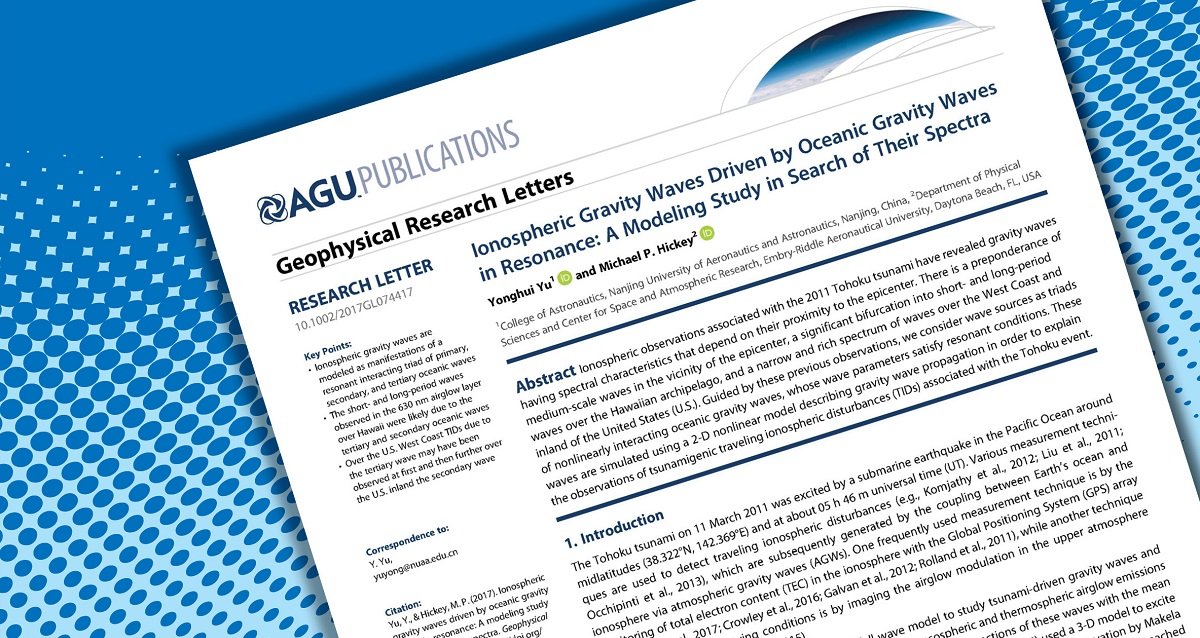New Research Offers Clues to Tsunami’s Specific Impacts in Space

A massive deep-sea megathrust on March 11, 2011, triggered a magnitude-9.0 Tōhoku earthquake off Japan’s eastern coastline. The tragic aftermath of that event, including a tsunami that killed tens of thousands of people, injured many more and triggered the meltdown of three reactors at the Fukushima Daiichi Nuclear Power Plant, has been extensively reported.
By studying a less obvious outcome of the tragedy – the impacts of powerful oceanic gravity waves as they rocket high into the atmosphere – researchers at Embry-Riddle Aeronautical University are working to better understand the Earth’s responses to such events.
Specifically, Michael P. Hickey, dean of research and graduate studies on Embry-Riddle’s Daytona Beach, Fla., campus, and his former Ph.D. student, Yonghui Yu, now of China’s Nanjing University of Aeronautics and Astronautics, studied gravity waves in the upper atmosphere (ionosphere) that were driven by oceanic gravity waves following the 2011 Tōhoku earthquake.
Their peer-reviewed study was recently published by Geophysical Research Letters, a journal of the American Geophysical Union.
The researchers concluded that, after the 2011 earthquake, a third or “tertiary” round of oceanic gravity waves actually generated atmospheric gravity waves that propagated upward and caused disturbances in the ionosphere. Those waves could be detected about 30 minutes before the impacts of the first disturbance hit that region of the atmosphere.
“Numerical simulation models can help us interpret observations, in this case of propagating ionospheric disturbances,” Hickey said. “The numerical simulations described in this paper have demonstrated that the observed ionospheric response is determined by a complex interaction of different components of the original tsunami. Future modeling coupled with ionospheric observations will help contribute to a better understanding of the dynamics of the underlying tsunamis.”
Hickey’s work, based on a unique computer model developed by Yu during his Ph.D. dissertation research, is part of the Center for Space and Atmospheric Research (CSAR) at Embry-Riddle. The Center investigates the terrestrial upper atmosphere and near-space environment – a field in which Hickey has published numerous influential journal articles.

 Ginger Pinholster
Ginger Pinholster